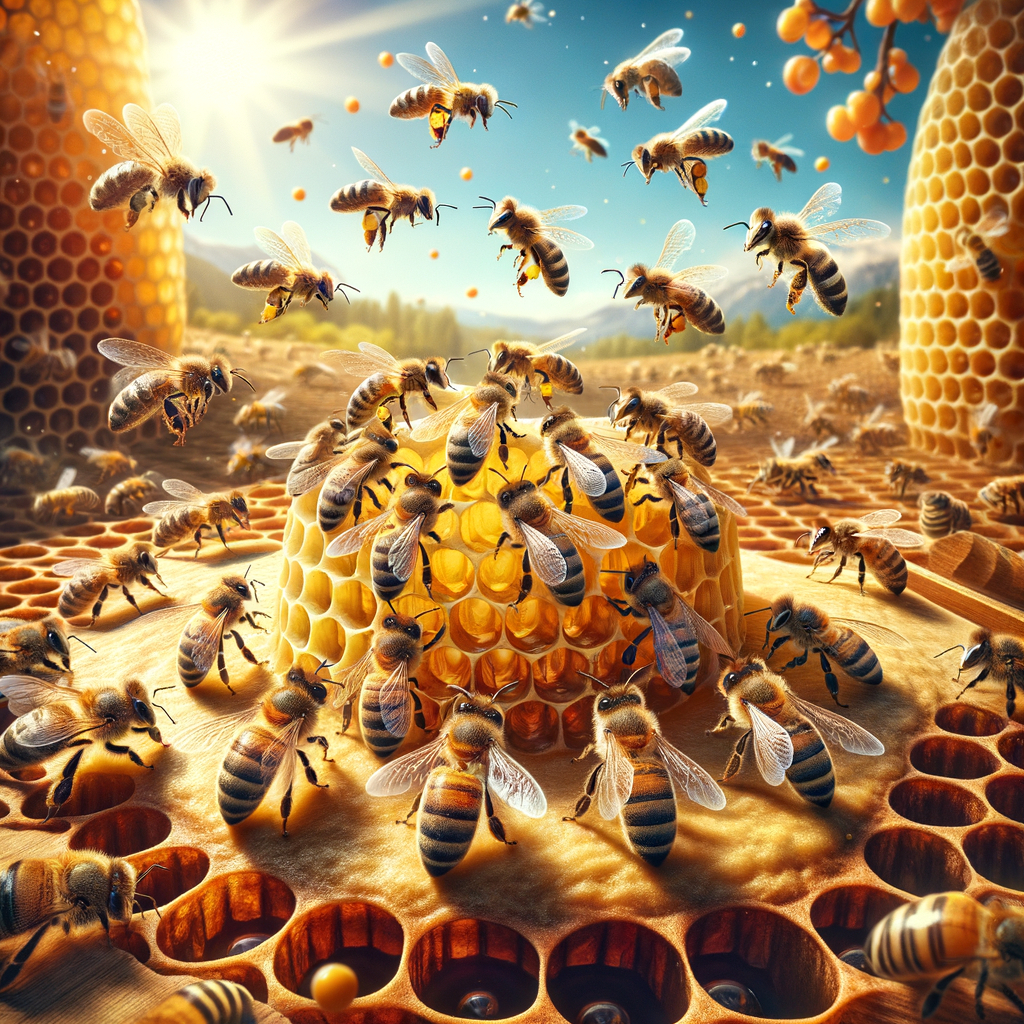Physical Address
304 North Cardinal St.
Dorchester Center, MA 02124
Physical Address
304 North Cardinal St.
Dorchester Center, MA 02124

When one thinks about communication, the image that often comes to mind is of two humans engrossed in conversation. However, the spectrum of communication extends far beyond human interaction and encompasses a vast range of species, including insects like bees. This article delves into the fascinating world of bee communication.
Bees are social insects known for their complex colonies and sophisticated forms of communication. They rely on this intricate system to coordinate activities such as food gathering, colony defense, and reproduction. Without effective communication, these critical tasks would be impossible to achieve.
The most famous form of bee communication is undoubtedly the waggle dance—a term coined by Austrian biologist Karl von Frisch who won a Nobel Prize for his work on bee behaviour. The waggle dance is a unique method used by bees to communicate the direction and distance of food sources or potential nesting sites from their hive.
A worker bee returning from a successful foraging trip will perform this dance on the honeycomb inside their hive. The dance consists of a figure-eight pattern where the bee waggles its body during the straight run before turning right or left to begin another loop. The angle at which this straight run is performed in relation to gravity communicates the direction relative to the sun’s position, while the duration indicates distance—the longer they waggle, the further away it is.
In addition to waggle dances, bees also perform what’s known as round dances. These are simpler in nature and typically used when food sources are located close (less than 100 metres) to their hive. During a round dance, the bee moves in a circular pattern, alternating between clockwise and anticlockwise directions. This dance doesn’t indicate a specific direction but rather signals nearby food sources.
Beyond these dances, bees also communicate using pheromones—chemical signals that trigger specific responses in other members of the colony. Pheromones play an essential role in various aspects of bee life, from marking nectar-rich flowers to alerting the hive of potential threats.
For instance, when a bee stings an intruder, it releases an alarm pheromone that alerts other bees to the danger and prompts them to attack. Similarly, queen bees emit specific pheromones that regulate colony activities like worker bee tasks and drone reproduction.
A lesser-known form of communication among bees is through vibrations or buzzing sounds. Bees use this method for different purposes such as silencing noisy members during decision-making processes or creating heat by shivering their flight muscles during cold weather.
Understanding the language of bees offers us not only fascinating insights into their world but also vital knowledge on preserving these remarkable creatures. As primary pollinators, they play an indispensable role in our ecosystems and food production. Recognising their sophisticated methods of communication emphasises the complexity and importance of their existence.